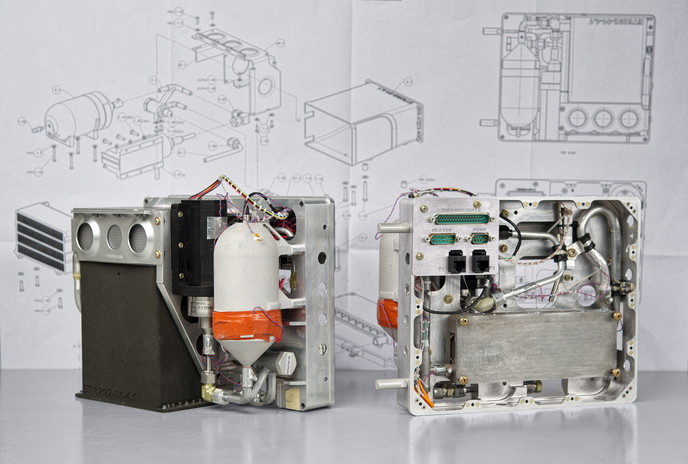Cooling solution reduces thermal constraints, weight and size of commercial plane components
An aircraft’s electronic components are typically cooled with air or liquid. However, the high amount of electrical power required for more-electric aircraft (MEA) results in a much greater amount of waste heat and heat density. With established cooling techniques, this increased heat load leads to high electronic component temperatures. Furthermore, the mass and volume of a traditional cooling system becomes prohibitively large.
Power electronics for next-gen aircraft equipped with more-electrical systems
The EU-funded TOPMOST project has developed a novel two-phase pumped cooling system. “The system uses a pump to circulate a cooling fluid, which then flows through an evaporator where the waste heat from the electronic component is absorbed while the liquid evaporates,” explains coordinator Henk Jan van Gerner. “Because the latent heat of evaporation of a fluid is used, only a small fluid mass flow is required to cool the electronic component, resulting in small components and a low mass.” The key advantage of the two-phase system over standard single-phase systems is that its required mass flow is substantially less for a given heat load, allowing for smaller tubing diameter and component dimensions. As a result, it tends to be more compact and less heavy than its single-phase counterparts. Furthermore, due to evaporation and condensation, the temperature of the liquid/vapour mixture is nearly the same for the entire system. This results in a uniform temperature for the electronic component’s surface. Project partners designed and built two two-phase pumped cooling system demonstrators intended for a single electronic component. They rigorously and successfully tested the demonstrators to see if they can survive harsh conditions such as vibrations and salt spray encountered by aircraft.
Cutting-edge production method leads to excellent thermal performance
To reduce the cooling system’s mass and volume, most of the components have been manufactured from 3D printed aluminium. The use of this novel production technique brought about an unprecedented low system mass (2.5 kg), and small system dimensions – 42 % smaller volume than the requirement. The system is able to cool 2 400 W of waste heat – twice the requirement – while the temperature difference between the different hotspots on the electronic component is kept below 2 °C. Aluminium is considered new for 3D printing, and issues encountered and lessons learned in printing this metal during the project will greatly contribute to 3D printing knowledge. Thanks to TOPMOST, the newfound expertise will benefit future projects. For example, the ongoing IMPACTA project is building on these very outcomes to develop a two-phase pumped cooling system for communication satellites’ active antennas. According to van Gerner, the TOPMOST team also has plans to exploit the findings and develop a system capable of cooling multiple electronic boxes. “The electronic boxes can be made much more compact with more powerful electronics.” “TOPMOST’s relatively small two-phase pumped cooling system allows for the use of more powerful and compact electronics in aircraft,” concludes van Gerner. “This will enable the development of MEA, leading to aircraft with lower CO2 emissions in the future.”







